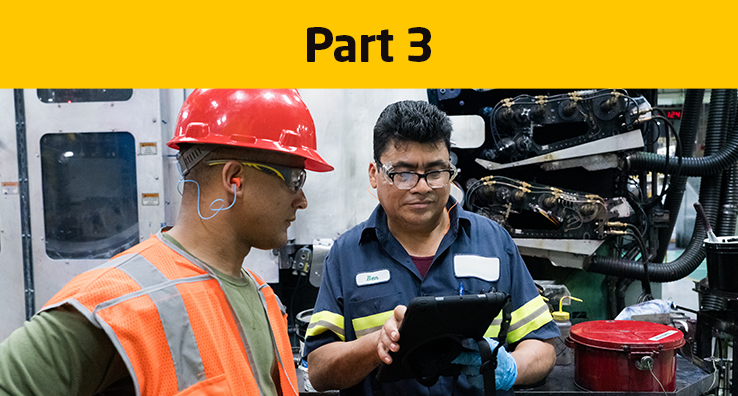Training Engagement Tips for Your Operations Leaders, Part 3: Communication

In this series of blog posts, we are exploring the subject matter from the webinar “The Four Cs to Get Your Operations Leaders Excited About Training” with Bob Rysavy, HR Training Manager at Hearthside Food Solutions, and Kristin Kastrup, Senior Consultant, Training and Human Resource Optimization. Read Part 1 and Part 2.
When getting your operations teams aligned with an ongoing training program, one major thing to consider is communication. Whether it’s communicating to other teams or to the entire workforce, how can you make it meaningful? Kastrup and Rysavy provide their tips and insight, based on personal experience:
1. Be able to communicate “What’s In it for Me?” to each audience.
“The ‘what’s in it for me?’ for your frontline worker is going to be different than the ‘what’s in it for me?’ for your HR manager or your EVP of supply chain,” says Kastrup. So help them understand exactly what’s in it for them so that they know why your training program is important to them.
2. Talk about goals.
And more than that — talk about expectations, results, challenges, and successes. These will also most-likely depend upon who you’re communicating this information to, so the messaging might be a little different each time. “Senior leadership might be a bit more interested in results, whereas your superuser group is going to be a bit more interested in challenges, but these are things that really we should be communicating about across the board,” says Kastrup.
3. Ask what’s important to them.
If you’re generating reports for people, make sure you understand the specific questions they are trying to answer. Are they interested in which training activities are the most effective? Are they interested in time spent in training due to a state grant? Are they checking up on compliance because of a pending audit? Kastrup emphasizes the need to find out by asking them directly.
What Are Effective Mediums of Communication?
Determine what works best for getting effective messaging out in front of different departments and frontline workers.
Bulletin boards “These are good for everyone,” says Kastrup. They’re successful in a plant environment because people walk by them every day. So make sure the ones in your facility are interesting enough to attract attention!
Scorecards This is where you can tie your training activity to business outcomes. Scorecards are generally a “roll up” of information that tend to percolate upwards into senior leadership and other high-level stakeholders.
Huddle talks These are a great opportunity to reinforce the training your workforce has received, and also provide an opportunity to give some of your subject matter experts the spotlight by asking them to highlight different how the training topics apply to day-to-day work.
Use a combination of communication styles. Rysavy says, “However people want to hear it is the way we need to deliver it.” There are many different learning styles out there, from visual to kinesthetic, so a combination of two or more communication methods is ideal.
Rvsavy witnessed a successful example of this at his facility during a safety initiative where each plant had training events that they put together with their own themes. One plant utilized a ton of visual cues to reinforce the topic, while another used music. “It was so unique!” he says.
Letting individual facilities pick their own theme and communication style during events is a great way to give them a voice and a stake in what happens—which leads us into our next C: Culture. In our upcoming blog in this series, we’ll explore what a vibrant training culture really looks like.
Subscribe to our blog to ensure you don’t miss it!





